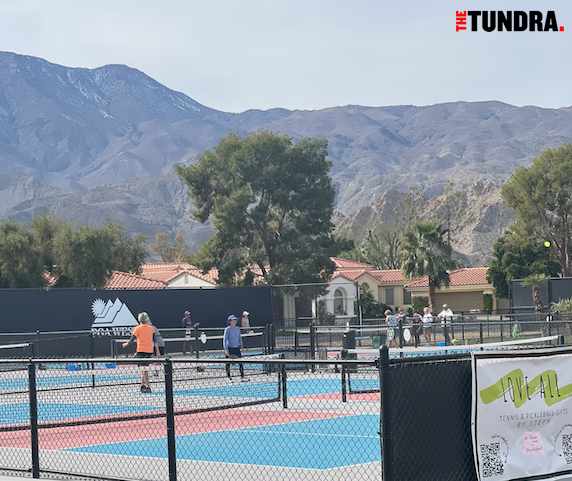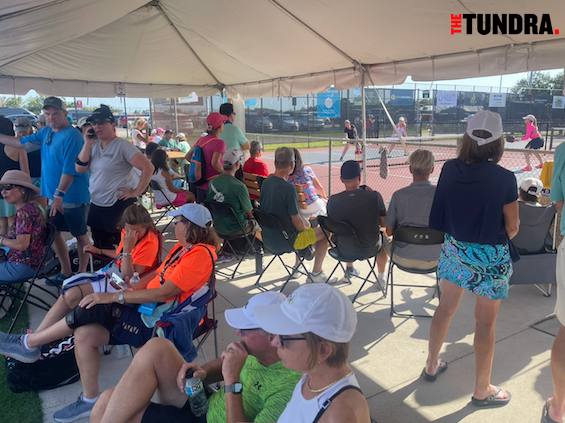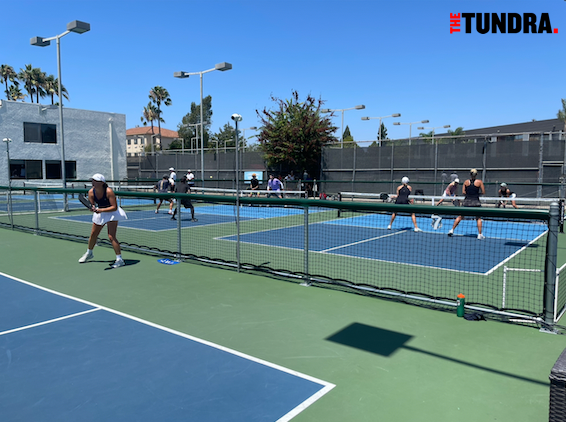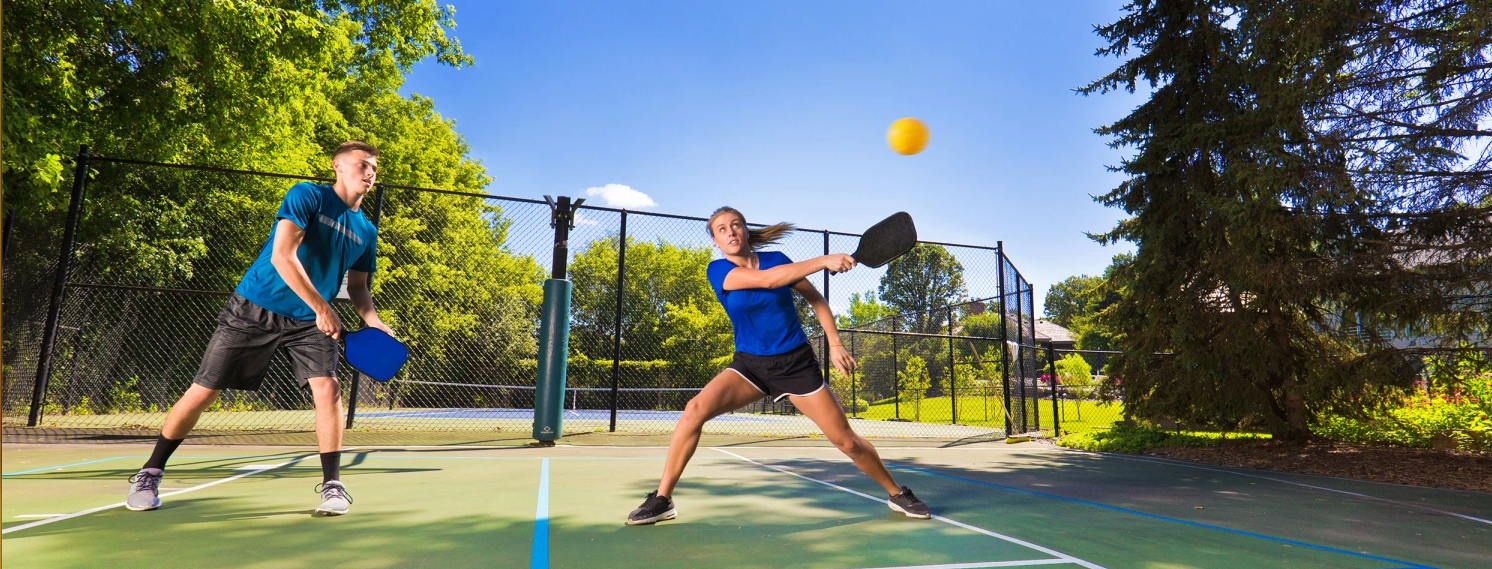Pickleball Rally Scoring Emerging As Practical Operational Solution
Demand for the sport may ultimately affect how its played

If you have a pulse, you have witnessed the explosive growth of pickleball. In just a couple of years, pickleball has gone from a little-known game with a goofy name that wasn’t even a candidate for broadcast on ESPN 8 to a sport played by millions. Before we knew it, Stephen Colbert was hosting a primetime pickleball special. Legends from the sports and entertainment worlds are investing in it. Heck, Subway even launched a new pickleball-inspired sub (ham, bacon, double American cheese, lettuce, tomatoes, onions, honey mustard, and of course pickles). This fact alone proves that even if you haven’t personally picked up a paddle, pickleball has quickly become solidified in popular culture. Celebrities Propel Pickleball Into the Limelight.
But it’s not all puppies and ice cream.
This increased interest in pickleball has created a shortage of pickleball courts. While new court construction projects are underway throughout the U.S., there’s been pushback from neighbors regarding the noise and zoning rules. In addition, hardcore tennis players are mobilizing to keep pickleball from encroaching further on their courts. The result is too many players and too few courts, longer wait times, and growing frustration by club managers and rec organizers struggling to implement equitable rules to accommodate an overflow of players.
More clubs are turning to rally scoring for pickleball scoring as a way to speed up play and get more people onto the courts. Pickleball Courts Near You: Best Community Resources
How does rally scoring work in pickleball? Pretty well actually because pickleball rally scoring is simple to follow, is similar to scoring in other sports, and is easy for fans and non-players to understand. As the sport trends younger and faster, rally scoring allows for quicker game play, more intense action, and the ability to better manage court availability and tournament schedules.

Pickleball Scoring Rules In a Nutshell
Stop by any neighborhood court and there are two things you’re sure to hear – the unmistakable thwap of a pickleball paddle striking a ball and confused players asking for help with serving and scoring. “Am I the two?” “When do we get a point?” “It’s been 0-0 forever.” When you start your pickleball journey, learning how to keep score seems to be the trickiest part of the game. People pick up the non-volley zone and two-bounce rules faster than side-out scoring, where only the serving team can score points.
Rally scoring tosses the complexity and confusion of pickleball scoring right out the window. With rally scoring, both the serving team and the receiving team can win a point at the end of every rally. How simple is that? If the serving team wins the point, they continue serving. When the serving team faults, the receiving team earns a point and gets to serve.
The time it takes to play a doubles match is reduced under pickleball scoring rally rules – some by as much as 20% – because you don’t have to wait for each partner to take their turn to serve. And because points are won after every serve, it reduces confusion caused by serving order and eliminates the need for the dreaded third number in a pickleball score. Adios 0-0-2.
Faster, More Intense Play, Consistent Game Times, Fewer Cranky Players
When points hinge on every rally, it’s inevitable that games will feature more intense action and less motivation to throw away your shot. Pickleball rally scoring favors more aggressive play by the receiving team, while serving teams may opt to hit safer serves to ensure they go in rather than going for the ace down the center line. This reduces the serving team’s advantage and allows for more creative strategies. Along with the increase in game intensity, rally scoring in pickleball fosters more consistent game times. Under side-out scoring, the length of time it takes to play each game can vary widely depending on how well or poorly the serving team is playing. Rally-scoring matches tend to fall within predictable game times, and this solves a number of issues.
Faster game play means more players can get on the court. Reducing wait times between games allows players to see more action instead of wasting time waiting and counting how many paddles are ahead of theirs to be in the next playing group. Pickleball tournament organizers are embracing rally scoring because the more predictable nature of game times can help ensure that rounds conclude on time. In addition, more consistency in the length of pickleball games is critical to TV broadcasters and streamers looking to carry pro pickleball tournaments.

MLP: The Rally Scoring Champ
The benefits of rally scoring in professional pickleball are on full display by the MLP pickleball league. As the new kid on the block, MLP organizers were looking to differentiate their tournaments from the sea of other pickleball events. They opted for a teams-based approach and went all-in on pickleball rally scoring. The results have been an undeniable success. MLP pickleball produced some of the best made-for-TV pickleball moment, filled with high-intensity action, fast-paced games, and scoring that experienced players, newbies, and casual fans can understand. Adopting rally scoring has allowed MLP to make pickleball more entertaining and fan-friendly and helps pickleball increase its viability as a TV product.
Change Is Constant - Just Ask Wimbledon

Change can be hard to accept, but it doesn’t have to be. For pickleball purists, change is especially difficult because they worry about losing aspects of the sport that made it appealing to them in the first place and have contributed to its phenomenal growth. But change is inevitable, and other sports have tinkered with their rules to reduce the length of time to play games and increase fan enjoyment. This year, Major League Baseball implemented a pitch timer to speed up play. Batters must now be in the batter’s box within 30 seconds after the previous hitter’s plate appearance. Pitchers must start their wind-ups before the expiration of the pitch timer or be charged with a ball. Batters are given an automatic strike if they violate the pitch timer. As a result of implementing the pitch timer, MLB games are on average 26 minutes faster. Fenway Park and Pickleball: Historic Game-Changing Partnership
Tennis, the original racquet sport, and the sport of kings, has not shied away from changing its rules to speed up play and not just make the sport more enjoyable for fans but for players as well. The introduction of the tie-breaker greatly reduced match times by eliminating the need to win a set by two games. Prior to tiebreakers, matches could go on for what seemed like forever. Even Wimbledon accepted the need to make a change and implemented a final set tiebreaker after the 2010 match between John Isner and Nicolas Mahut lasted an unbelievable 11 hours over two days. In addition, the PGA is introducing tournaments with fewer golfers and no-cut lines to increase competition and make match times more predictable for TV broadcasts.

Pickleball’s expansive growth has given rise to equally rapid new thinking in terms of strategy, rules, and equipment. New paddle technology, pickleball tourism, the expansion of pickleball into urban areas, an increasing number of tournaments, and growing prize money pools, all point to the sport’s continued growth. Rule changes – the drop serve is here to stay, the spin serve is out – are being refined and implemented to streamline play, clarify inconsistencies, and make the sport more competitive for existing players and more welcoming to newbies. Rally scoring may be the next change that Pickleball needs to propel the sport to even greater heights, popularity, and mainstream appeal.

